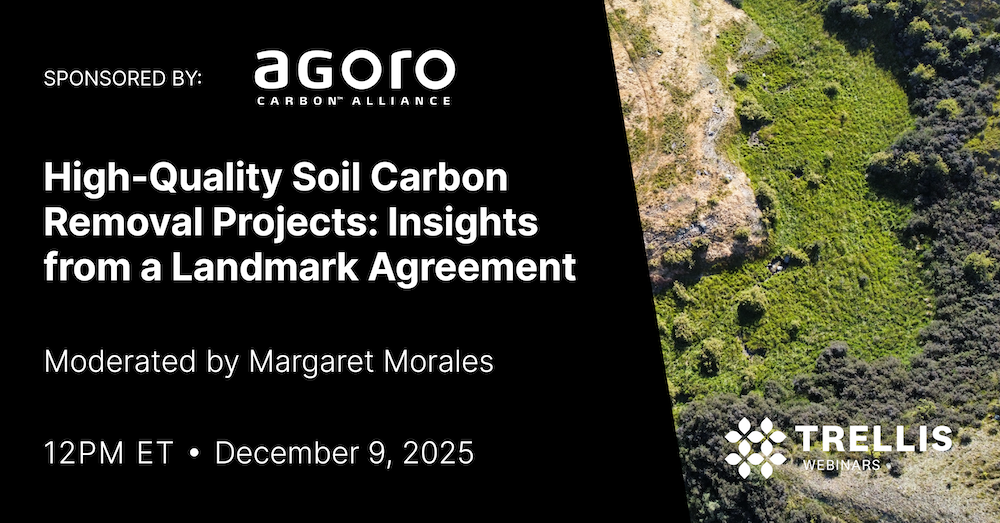Idaho wetland battle brews after Supreme Court’s Sackett ruling – E&E News by POLITICO

Report on Wetlands Jurisdiction Dispute in Idaho and Implications for Sustainable Development Goals
Executive Summary
A new legal conflict has emerged in Bonner County, Idaho, concerning the federal regulation of wetlands. This case follows the landmark Supreme Court decision in Sackett v. EPA, which significantly narrowed the scope of the Clean Water Act. The U.S. Army Corps of Engineers is asserting jurisdiction over a property with wetland characteristics that the landowners, represented by the Pacific Legal Foundation, argue are no longer protected under the new legal precedent. This dispute carries profound implications for the United States’ progress toward several key Sustainable Development Goals (SDGs), particularly those concerning water, ecosystems, and climate resilience.
Case Details and Legal Context
- Location: A 4.7-acre property in Bonner County, Idaho, near the site of the original Sackett case.
- Parties in Conflict: The property owners versus the U.S. Army Corps of Engineers.
- Core Dispute: The Army Corps has determined that over an acre of the property constitutes federally regulated wetlands, alleging it is part of a larger “wetland complex” connected to a tributary.
- Legal Precedent: The Supreme Court’s ruling in Sackett v. EPA established that the Clean Water Act only protects wetlands with a “continuous surface connection” to navigable waters.
- Landowners’ Position: The landowners contend the Army Corps is ignoring the Supreme Court’s precedent by claiming jurisdiction based on an alleged subsurface connection, with the wetlands in question being physically separated by a road.
Impact on Sustainable Development Goals (SDGs)
The outcome of this and similar disputes directly influences the nation’s ability to meet its environmental and sustainability commitments as outlined in the SDGs.
SDG 6: Clean Water and Sanitation
The continued protection of wetlands is fundamental to achieving SDG 6, which targets the availability and sustainable management of water and sanitation for all.
- Water Quality: Wetlands serve as natural filters, removing pollutants and purifying water. Reducing the scope of protected wetlands threatens to degrade water quality in adjacent rivers, streams, and lakes.
- Sustainable Management: The legal uncertainty over which wetlands are protected complicates efforts to sustainably manage water resources, a core objective of SDG 6.
SDG 14: Life Below Water & SDG 15: Life on Land
This case has significant consequences for the protection of biodiversity, a central theme of SDG 14 and SDG 15.
- Habitat Loss: Wetlands are critical ecosystems that provide essential habitat, breeding grounds, and nurseries for a vast array of terrestrial and aquatic species.
- Ecosystem Integrity: The removal of federal protections, as sought by the landowners, could lead to the destruction of these habitats, undermining targets for halting biodiversity loss and restoring degraded ecosystems.
SDG 11: Sustainable Cities and Communities & SDG 13: Climate Action
The role of wetlands in climate mitigation and adaptation is crucial for meeting the objectives of SDG 11 and SDG 13.
- Flood Mitigation: Wetlands act as natural sponges, absorbing excess rainfall and reducing the severity of floods, thereby protecting human settlements and infrastructure as per SDG 11’s goal of building resilient communities.
- Carbon Sequestration: As effective carbon sinks, wetlands play a vital role in climate change mitigation. Their degradation releases stored carbon and diminishes nature-based solutions for climate action.
Future Outlook and Procedural Steps
The resolution of this administrative challenge will set a precedent for the implementation of the Clean Water Act post-Sackett.
- The landowners have initiated an administrative appeal to contest the Army Corps’ jurisdictional determination.
- Should the appeal fail, the landowners have the option to file a lawsuit to compel the agency to comply with the Sackett ruling.
- Concurrently, the EPA and the Army Corps are developing a new regulation, expected later this year, which could further redefine and potentially narrow the scope of federally protected waters.
Analysis of Sustainable Development Goals (SDGs) in the Article
-
Which SDGs are addressed or connected to the issues highlighted in the article?
The article discusses issues related to legal battles over wetlands protection, which connects to several Sustainable Development Goals:
-
SDG 6: Clean Water and Sanitation
This goal is relevant because the article explicitly mentions the ecological function of wetlands in maintaining water quality. It states, “scientists say that all wetlands play a critical role in preserving water quality,” directly linking the protection of these ecosystems to the availability of clean water.
-
SDG 15: Life on Land
This goal, which aims to protect, restore, and promote the sustainable use of terrestrial and inland freshwater ecosystems, is central to the article. The entire dispute revolves around whether wetlands, which are critical inland freshwater ecosystems, receive federal protection under the Clean Water Act.
-
SDG 13: Climate Action
The article connects wetlands to climate resilience by noting their role in mitigating natural disasters. The statement that wetlands are critical in “reducing flood damages” links their preservation to strengthening resilience against climate-related hazards like extreme weather events and flooding.
-
SDG 16: Peace, Justice and Strong Institutions
This goal is addressed through the article’s focus on a legal dispute involving the interpretation and implementation of law. The conflict between property owners and federal agencies (Army Corps of Engineers, EPA) over the Sackett v. EPA Supreme Court ruling highlights challenges related to the rule of law and the effectiveness and accountability of governmental institutions.
-
-
What specific targets under those SDGs can be identified based on the article’s content?
Based on the issues discussed, the following specific SDG targets can be identified:
-
Target 6.6: Protect and restore water-related ecosystems
This target calls for the protection and restoration of “water-related ecosystems, including… wetlands.” The article’s core subject is the legal and regulatory battle determining the scope of federal protection for wetlands in Idaho, which directly impacts the achievement of this target.
-
Target 15.1: Conserve and restore terrestrial and inland freshwater ecosystems
This target aims to “ensure the conservation, restoration and sustainable use of… inland freshwater ecosystems and their services, in particular… wetlands.” The Supreme Court ruling that “erased federal protections for many wetlands” and the ongoing dispute over a 4.7-acre property represent direct challenges to the conservation of these ecosystems.
-
Target 13.1: Strengthen resilience and adaptive capacity to climate-related hazards and natural disasters
The article’s mention of wetlands’ role in “reducing flood damages” connects directly to this target. The potential loss of wetland protections would weaken natural defenses against flooding, thereby undermining efforts to strengthen resilience to such disasters.
-
Target 16.6: Develop effective, accountable and transparent institutions
The article describes a situation where a federal agency, the Army Corps of Engineers, is accused of “failing to comply with the ruling” from the Supreme Court. This dispute over the application of the law raises questions about the effectiveness and accountability of institutions responsible for environmental regulation.
-
-
Are there any indicators mentioned or implied in the article that can be used to measure progress towards the identified targets?
The article does not cite official SDG indicators, but it implies several metrics that can be used to measure progress:
-
Indicator: Extent of wetlands under federal protection
The article directly discusses the area of wetlands affected by regulation. It mentions a “4.7-acre property” with “over an acre of federally regulated wetlands” and notes the Sackett ruling “erased federal protections for many wetlands.” The change in the acreage of protected wetlands serves as a direct indicator for Targets 6.6 and 15.1.
-
Indicator: Number and nature of legal disputes over environmental regulations
The entire article is a report on a “new battle” and an “administrative appeal” that could become a “lawsuit.” The existence of such legal challenges against the actions of the Army Corps and EPA serves as an indicator of institutional conflict and lack of clarity in the application of the law, relevant to Target 16.6.
-
Indicator: Vulnerability to water-related disasters
By stating that wetlands are critical for “reducing flood damages,” the article implies that the loss of these ecosystems would increase a community’s vulnerability to flooding. Therefore, the preservation or loss of wetlands can be seen as an indirect indicator of progress towards Target 13.1.
-
-
Table of SDGs, Targets, and Indicators
SDGs Targets Indicators (Identified or Implied in the Article) SDG 6: Clean Water and Sanitation Target 6.6: By 2020, protect and restore water-related ecosystems, including mountains, forests, wetlands, rivers, aquifers and lakes. The extent/area of wetlands under federal protection (e.g., the “acre of federally regulated wetlands” mentioned). SDG 15: Life on Land Target 15.1: By 2020, ensure the conservation, restoration and sustainable use of terrestrial and inland freshwater ecosystems and their services, in particular forests, wetlands… Change in the conservation status of wetlands following the Sackett ruling and subsequent regulatory actions. SDG 13: Climate Action Target 13.1: Strengthen resilience and adaptive capacity to climate-related hazards and natural disasters in all countries. Implied indicator: Community vulnerability to flooding, which is affected by the preservation or loss of wetlands that provide flood damage reduction. SDG 16: Peace, Justice and Strong Institutions Target 16.6: Develop effective, accountable and transparent institutions at all levels. The number of administrative appeals and lawsuits filed against federal agencies (EPA, Army Corps) regarding the implementation of environmental law.
Source: eenews.net

What is Your Reaction?
 Like
0
Like
0
 Dislike
0
Dislike
0
 Love
0
Love
0
 Funny
0
Funny
0
 Angry
0
Angry
0
 Sad
0
Sad
0
 Wow
0
Wow
0












































































